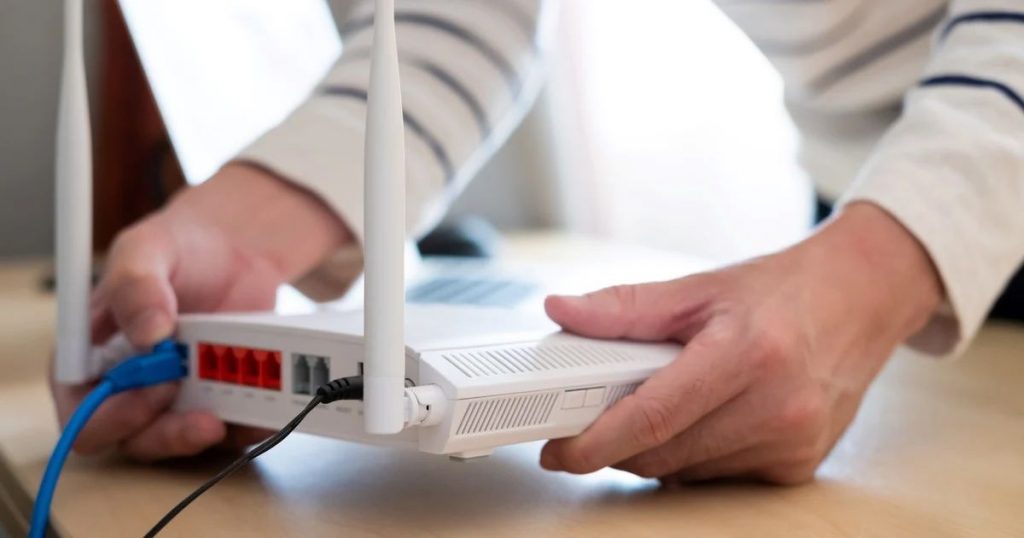Configuring a router is simple, and even though you might think that you need a professional to do that, you can effortlessly do it by yourself. You can access all of the settings of your WiFi network through your router; from there, change whatever it is you want to be changed.
By learning how to configure router settings, you can change the default name of your network, set parental controls, or change the password if you suspect someone is also using your WiFi without your permission. You can do everything and many other things easily, so let’s start.

How to Configure Router
Configuring your router through a WiFi connection and a web browser is the most common and straightforward way to set the router to your preferences.
As mentioned above, everyone can configure the router by simply using a device connected to the same network.
Also, before starting, connect the device you will use to configure the router with the router via cable or WiFi. You can enter your router’s configuration page adhering to three simple steps; they are:
- Find and use the IP address.
- Connect with the router.
- Log in to the configuration page.
Below, every step of the way is explained very simply so that anyone can do it; thus, let’s start.
Step-By-Step Guide
Step 1: Find the IP address
The first thing to do is to enter your router’s configuration page because that’s where you can make all kinds of changes. You can’t do that or anything else without the router’s IP address, so if you don’t know it, you can easily find it in the Command Prompt.
To find the router’s IP address, click on the “Windows key” on your keyboard and type “CMD”. In front of you, a small black window will open, and that’s the Command Prompt. Then, type “ipconfig” and press “Enter”.
All kinds of information will be shown in front of you, but what you are interested in are the last numbers displayed on the screen. Those numbers are your IP address, so save them because you’ll need them to enter into your router’s configuration page.
Step 2: Connect with the router
To connect with your router, you should use a device connected to the same network as the router. You can use your laptop, tablet, or smartphone, whatever is most convenient for you. Open any browser you want on your chosen device, and enter the router’s IP address into the browser bar. Doing this will take you to the router’s configuration page.
If you can’t access your router, you can reset it by simply pressing the “Reset” button and trying this again after it gets reset.
Step 3: Log in
On the configuration page, you’ll be asked to log in. To do that, you must use the username and the password provided on the back of your router. If you have already changed them, use the new ones.
Also, if you have problems logging in, try to write the words “administrator” or “admin” in the user name section and “password” in the password section. These are the default username and passwords that are usually used when someone is having problems logging into the configuration page. After successfully logging in, you can start making the changes you want.
Read more: How to Find My Router IP Address From Mobile
What Should You Configure to Improve Your Router Security?
Once you enter the configuration page, you can change many things, including the password, your network’s name, the SSID, etc.
However, the first thing that may be the most important to configure is improving your router’s security, and that’s an easy thing to do. You just need to enter a stronger password, always have the latest firmware, and change the SSID.
Change the password
Because the password that comes with the router is pretty easy to be hacked, it is best to change it. This is the easiest way to provide yourself with maximum security.
Just find the tab that refers to your account and passwords. You’ll easily find the page where you can change your password. While doing that, it is also great if you change your username.
Regarding the password, think good before entering a new one. Ensure that it is something easy to remember but complex enough that no one can guess. Also, don’t forget to mix numbers, and special characters into it, to make it harder to be hacked.
Update the firmware
Another thing you can do to increase the security of your router is to update your firmware. Doing that will protect you from viruses, malware, and hacker attacks.
Even though you probably know that most modern routers automatically update themselves, they always have the latest firmware; it is better to check if yours does that too. If you notice a newer version, download it and install it.
Change the Service Set Identifier
Service Set Identifier or shortly SSID is the name of your network. It is good to change the default one you have because the name of your network holds the name of the manufacturer, the brand, and the model of the router, which makes things a lot easier for hackers.
Also, don’t enter personal information in the new SSID name you will enter. Try to make the name as random as possible, so no one else will be able to assume that it is your network.
Also read: How To Update WiFi Drivers
Conclusion
As you can easily notice, configuring a router is not as hard as you might have thought. As a result, you’ll be able to relax and feel safe and secure.
So, by learning how to configure router, you’ll also get access to many options besides managing the router’s security, like setting up a wireless network, blocking unwanted websites, and many more.